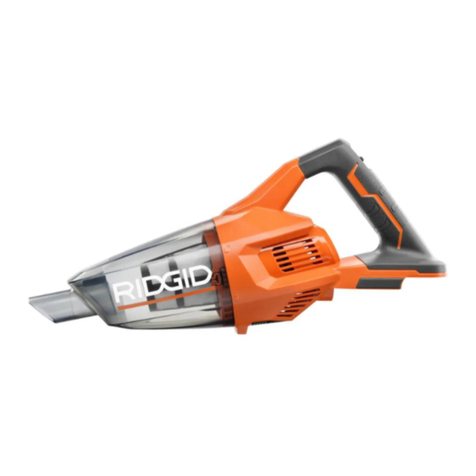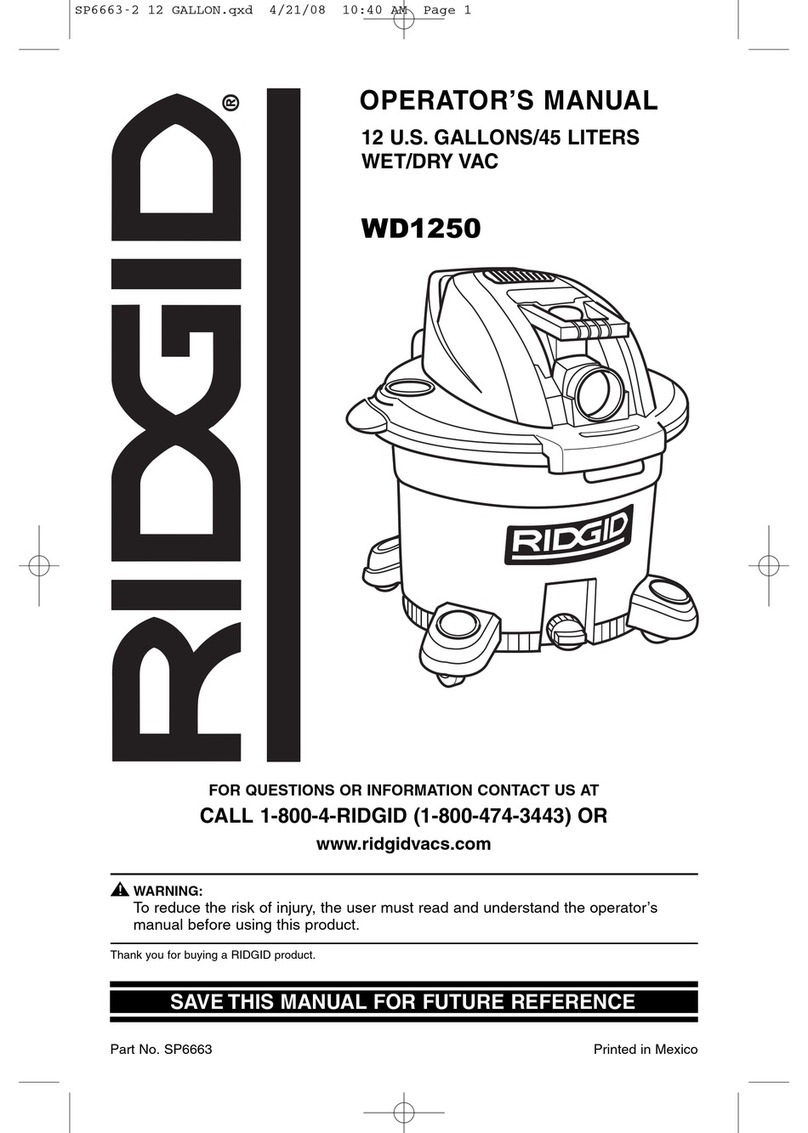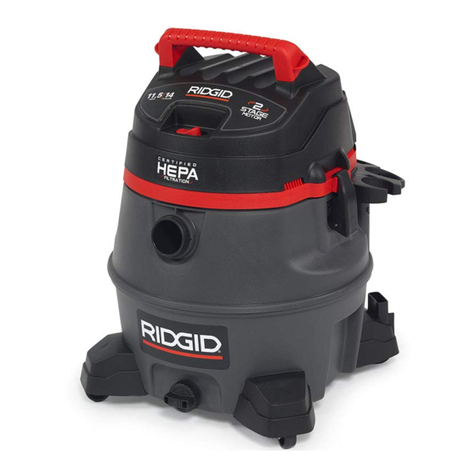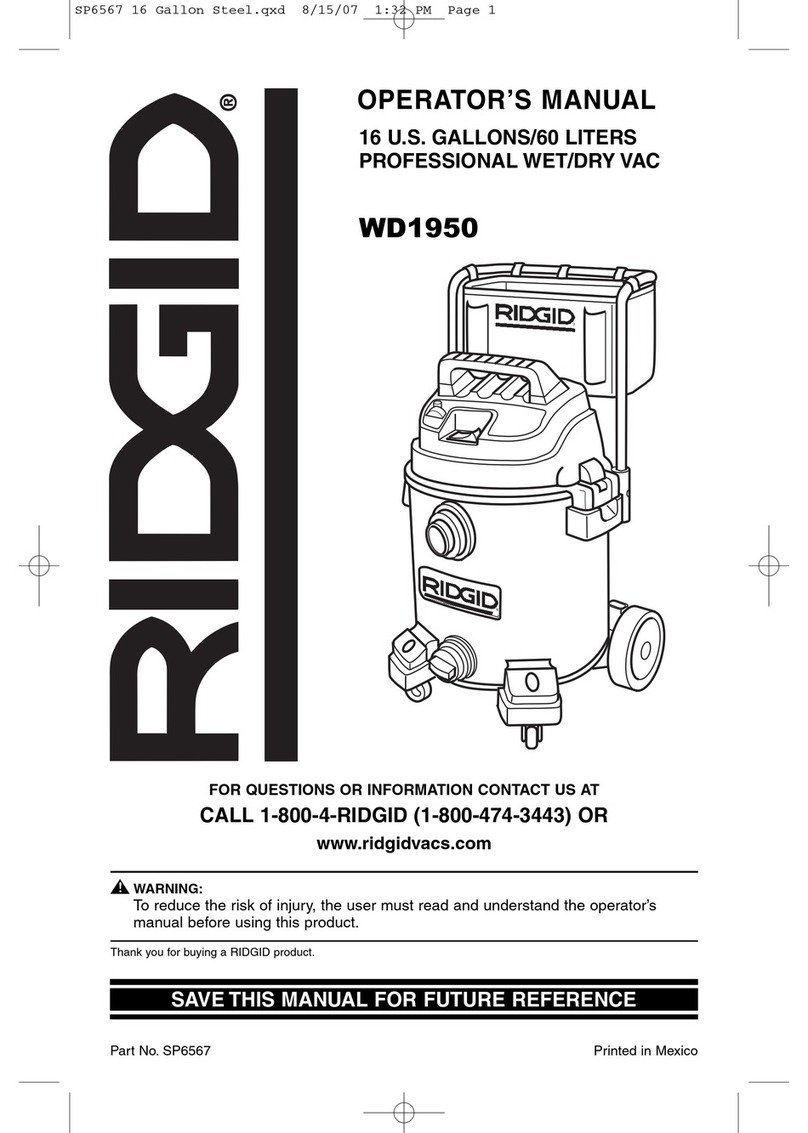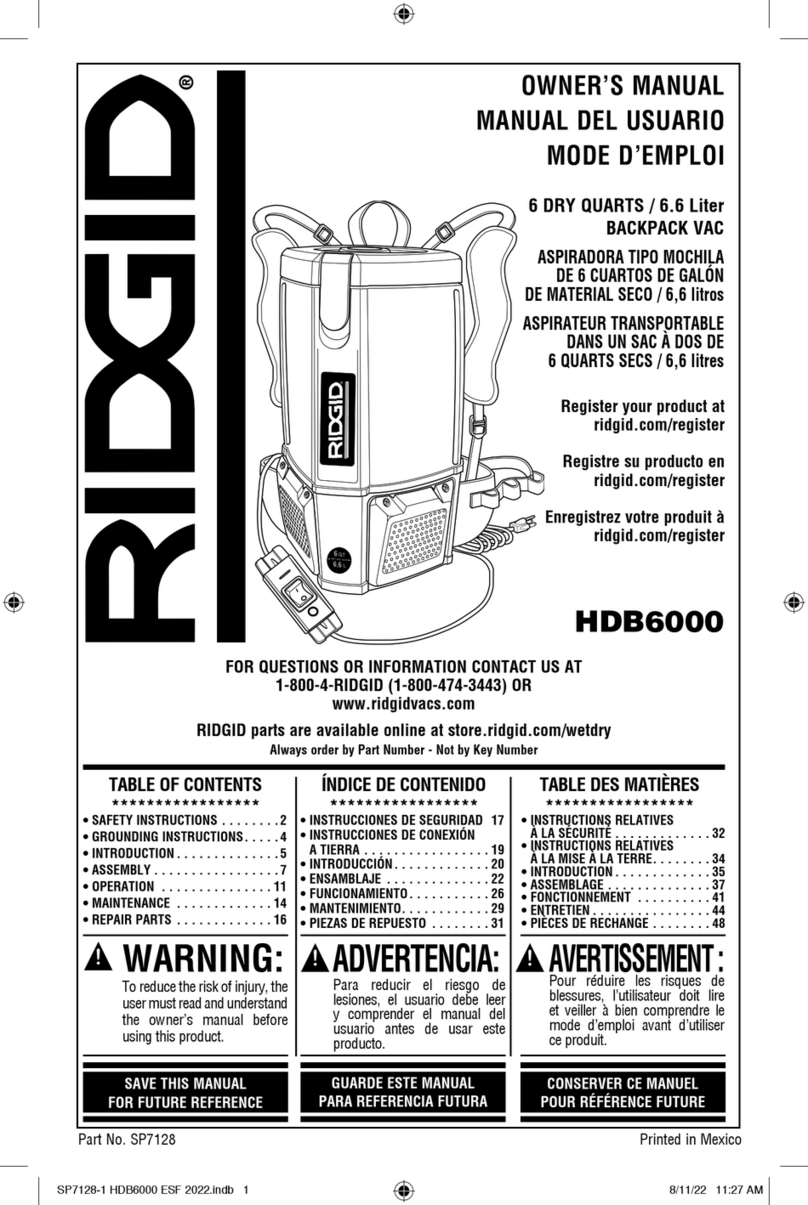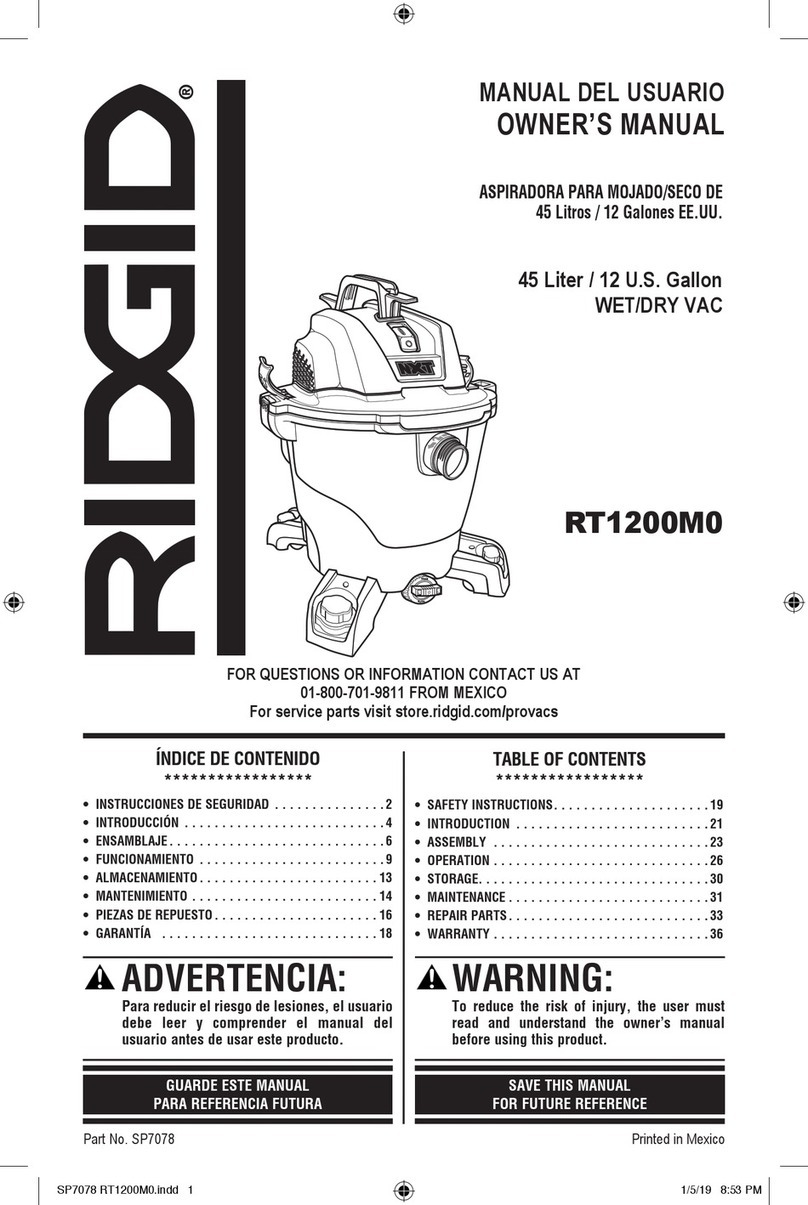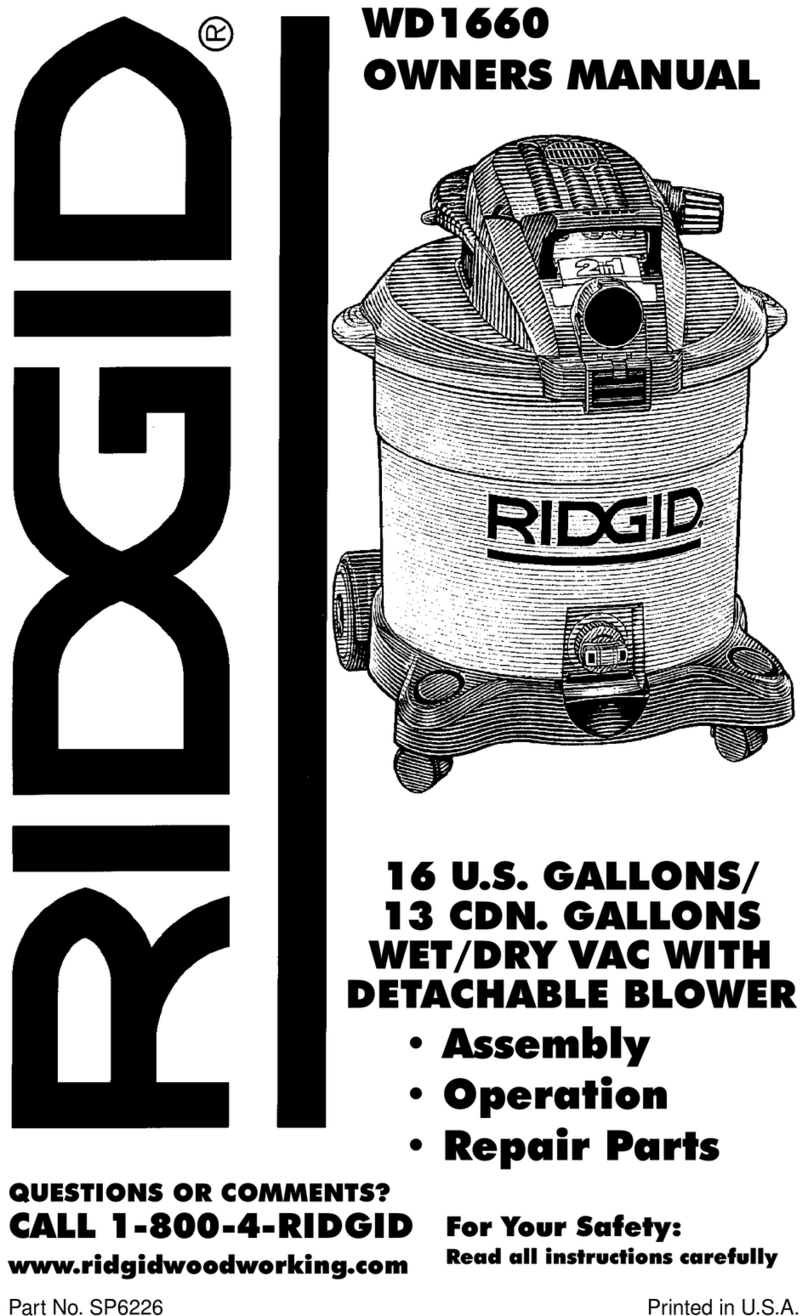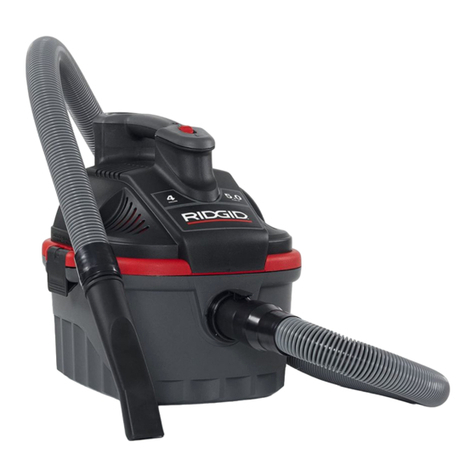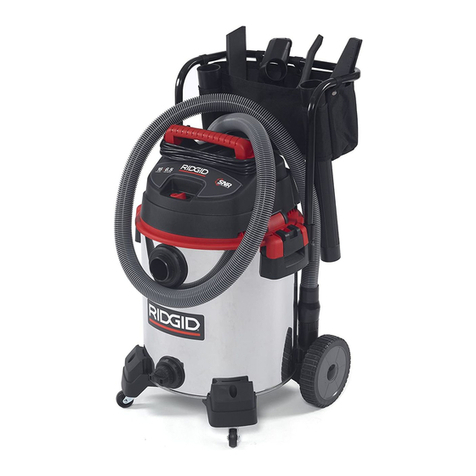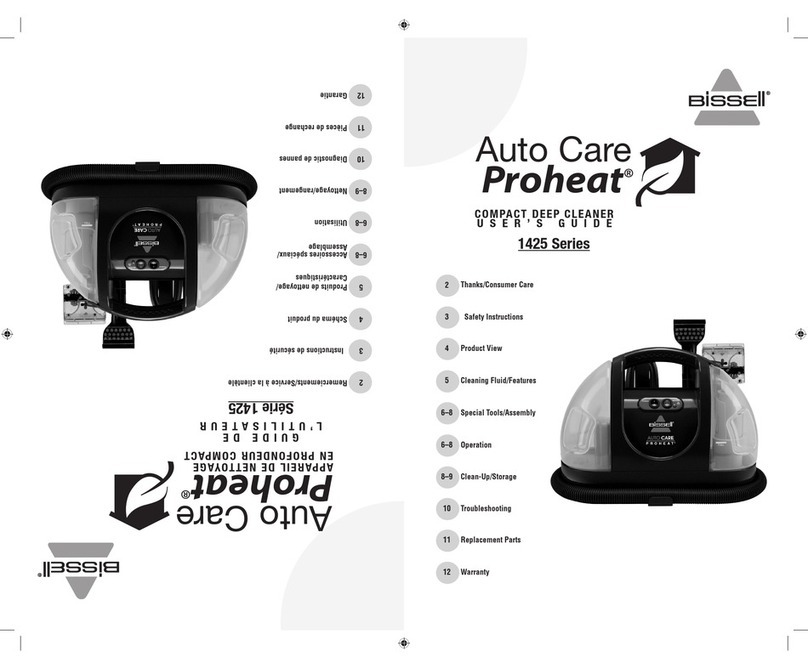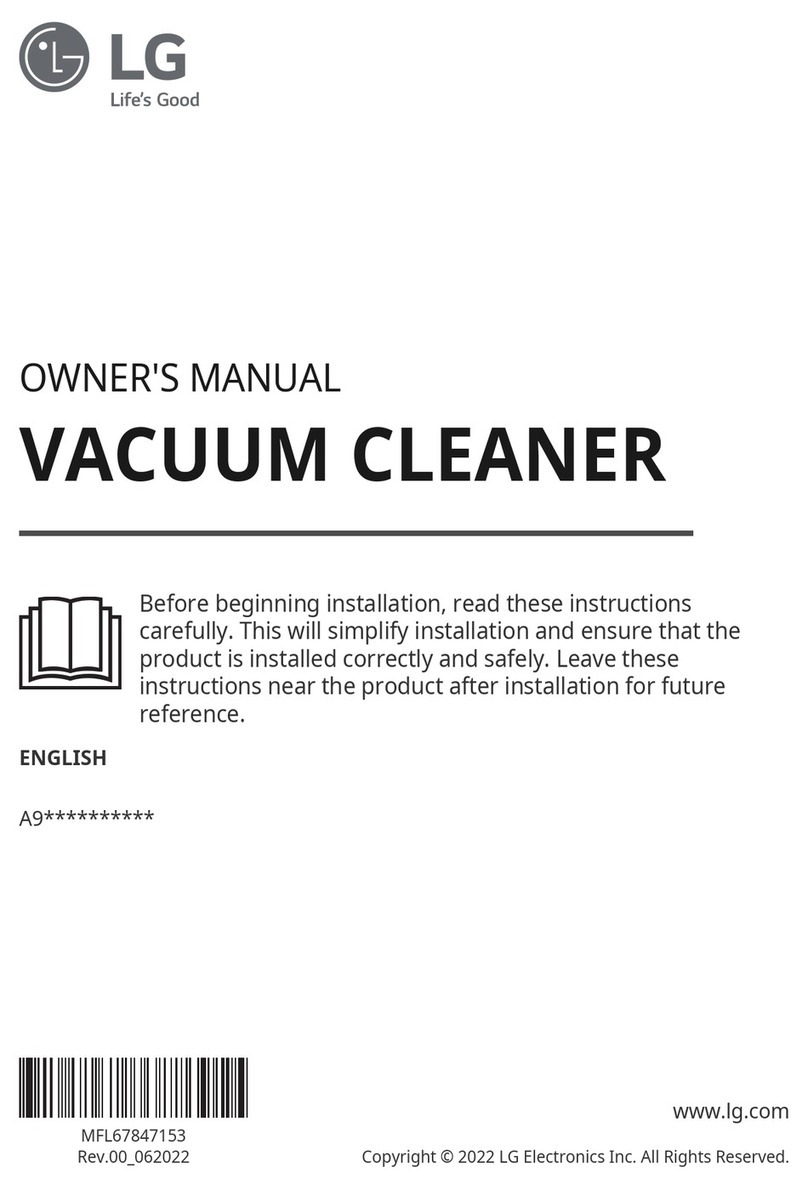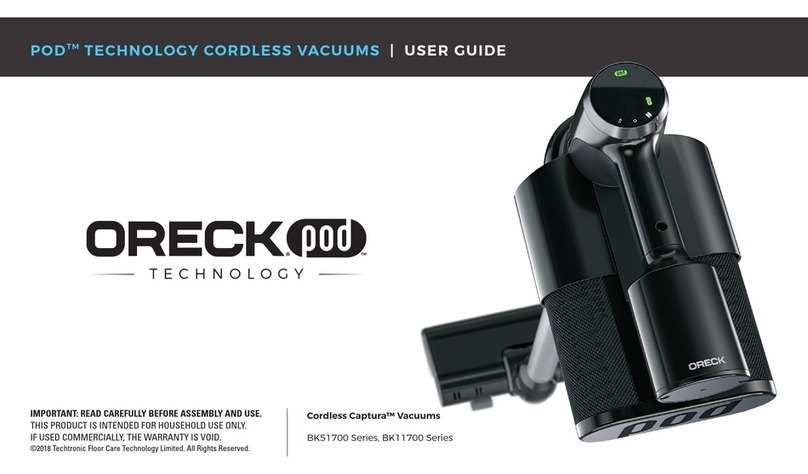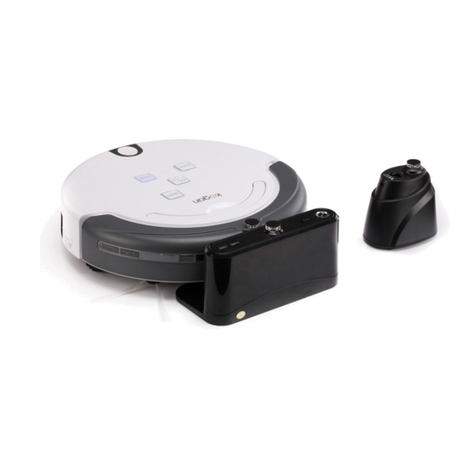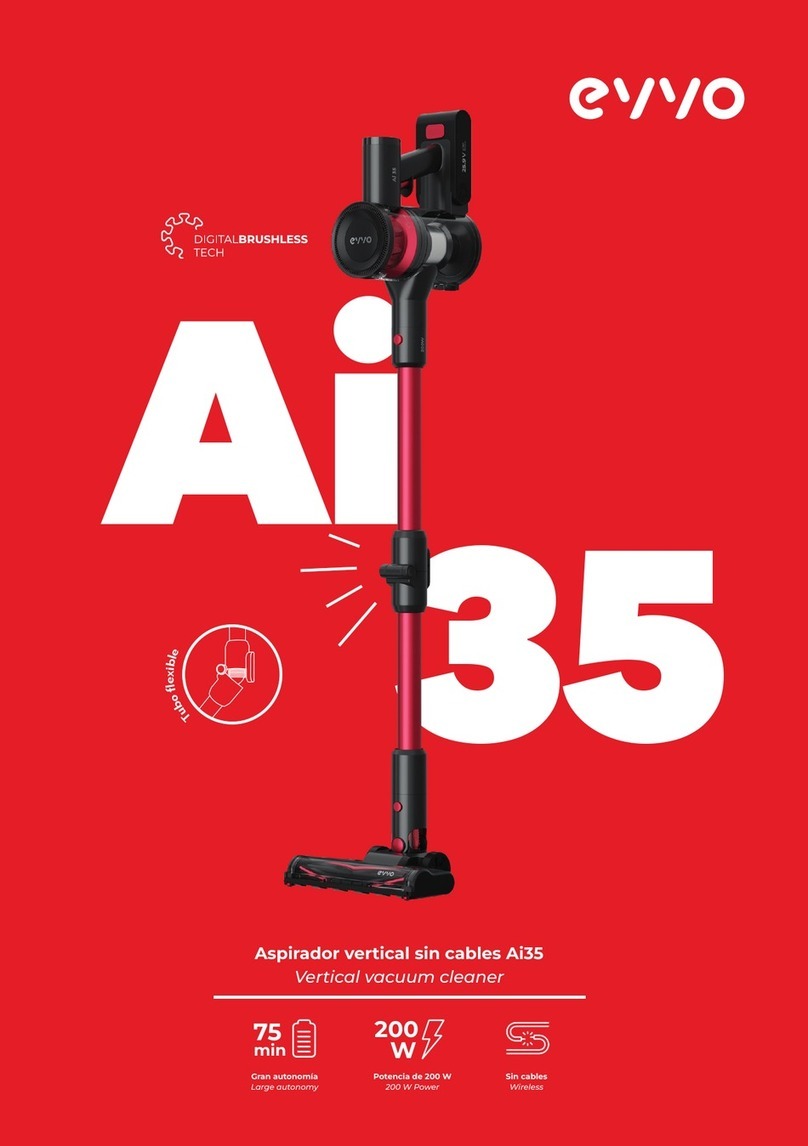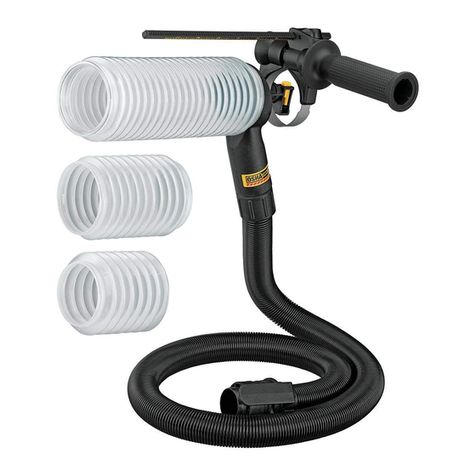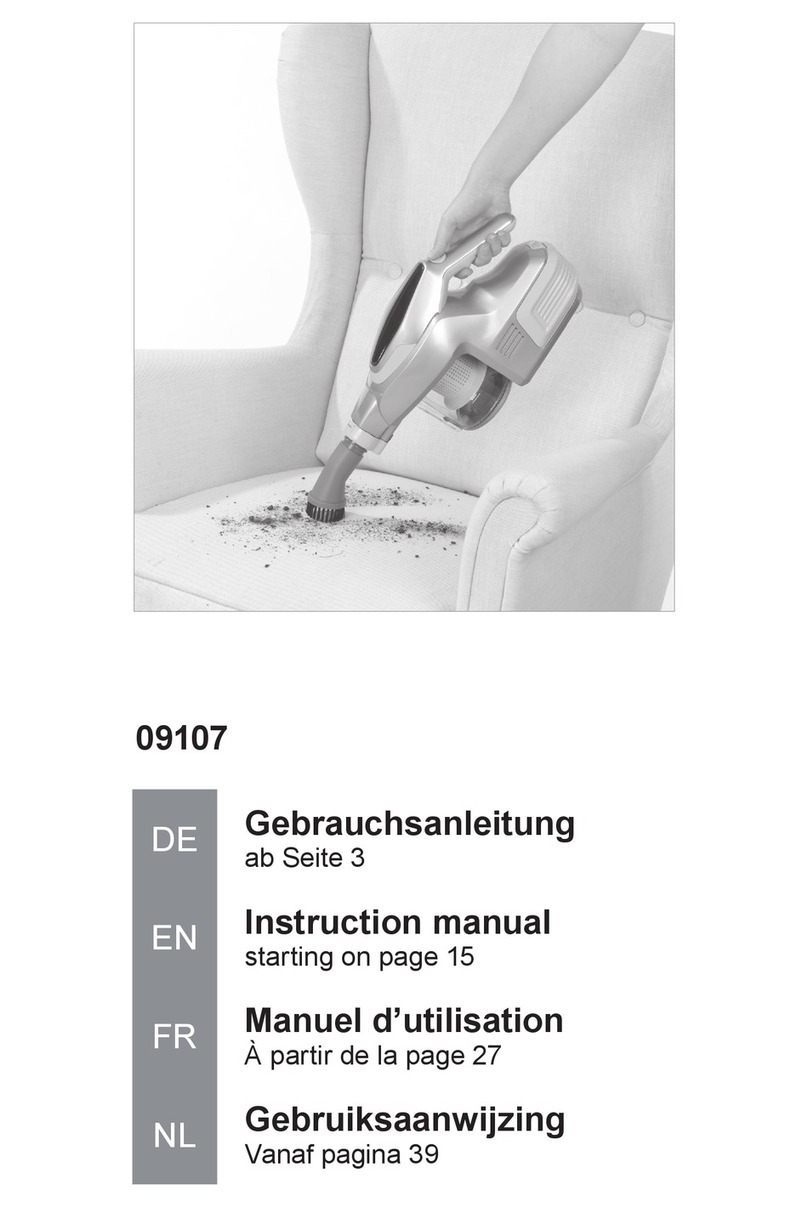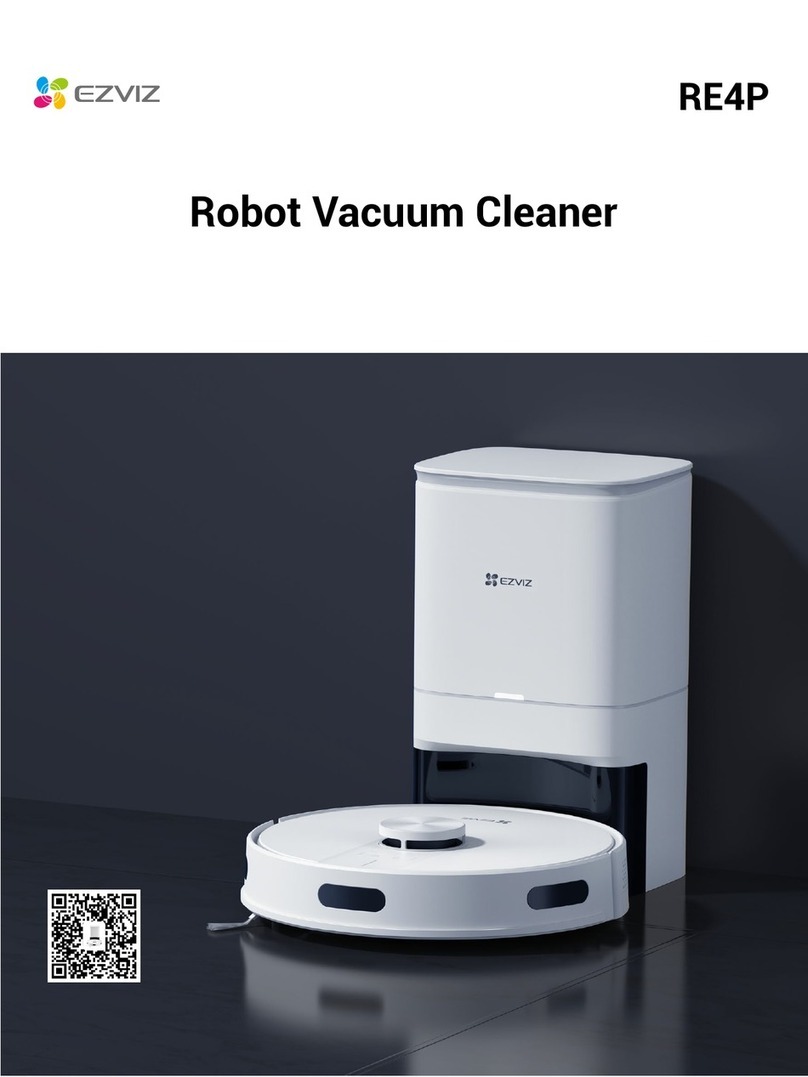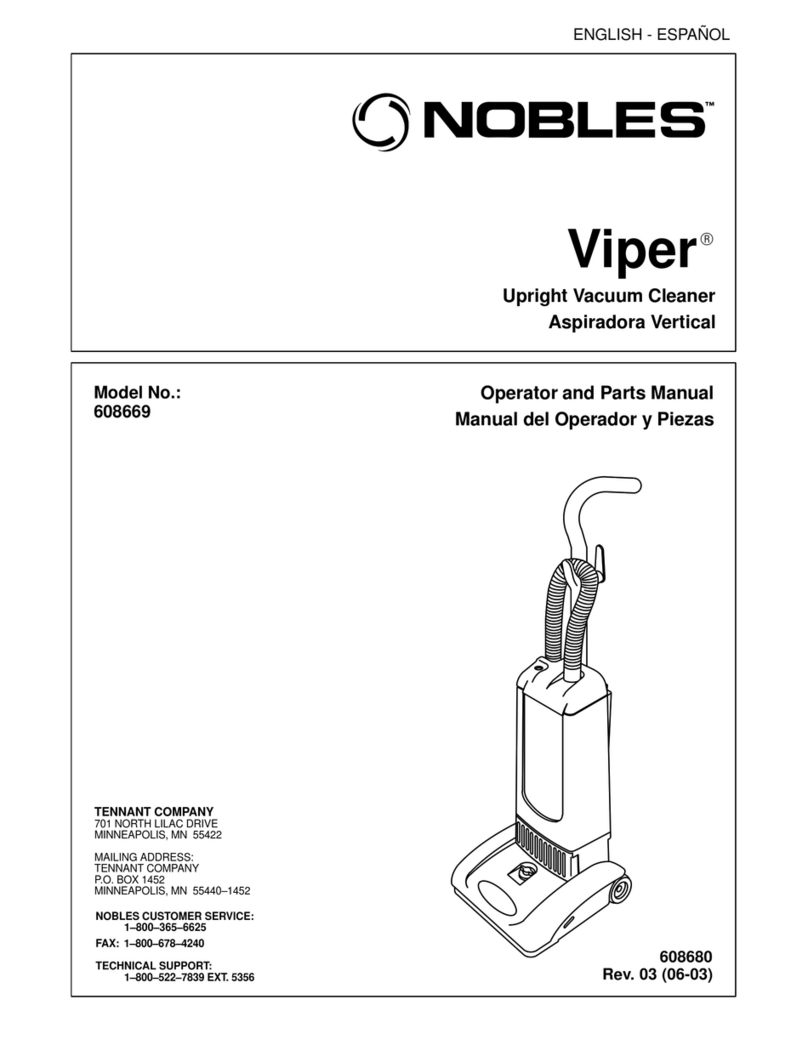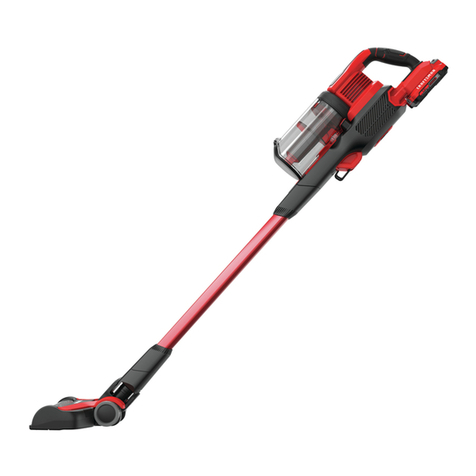
2
IMPORTANT SAFETY INSTRUCTIONS
Safety is a combination of using common sense,
staying alert, and knowing how your Wet/Dry Vacuum
Cleaner (“Vac”) works.
Safety Signal Words
DANGER: Indicates a hazardous
situation which, if not avoided, will result in death or
serious injury.
WARNING:Indicates a hazardous
situation which, if not avoided, could result in death or
serious injury.
CAUTION: Indicates a hazardous
situation which, if not avoided, could result in minor or
moderate injury or property damage.
When using your Vac, always follow basic safety
precautions including the following:
WARNING:
- To reduce the risk of fire,electric shock, or injury:
• Read and understand this manual and all labels on the
Wet/Dry Vac before operating.
• Use only as described in this manual.
• Do not leave Vac running while unattended - you may fail
to notice important signs indicating abnormal operation
such as loss of suction, debris/liquid exiting exhaust, or
abnormal motor noises. Immediately stop using Vac if
you notice these signs.
• Do not leave Vac when plugged in. Unplug from outlet
when not in use and before servicing.
• Sparks inside the motor can ignite flammable vapors
or dust. To reduce the risk of fire or explosion, do not
use near combustible liquids, gases, or dusts, such as
gasoline or other fuels, lighter fluid, cleaners, oil-based
paints, natural gas, coal dust, magnesium dust, grain
dust, aluminum dust, or gun powder.
• Do not vacuum anything that is burning or smoking,
such as cigarettes, matches, or hot ashes.
• To avoid the risk of self-ignition of drum debris, empty
drum after each use. Combustible materials, such as
rags or sawdust containing stain or urethane, can be
sources of such overheating.
• Do not vacuum drywall dust, cold fireplace ash, or other
fine dusts with standard filter. These may pass through
the filter and be exhausted back into the air. Use a fine
dust filter instead.
• To reduce the risk of inhaling toxic vapors, do not
vacuum or use near toxic or hazardous materials.
• To reduce the risk of electric shock, do not expose to
rain or allow liquid to enter motor compartment. Store
indoors.
• This Wet/Dry Vac is not intended for use by persons
(including children) with reduced physical, sensory, or
mental capabilities, or lack of experience and knowledge,
unless they have been given supervision or instruction
concerning use of the appliance by a person responsible
for their safety.
• Do not allow to be used as a toy. Close attention is
necessary when used by or near children.
• Do notuse witha tornfilter orwithout filter installedexcept
when vacuuming liquids as described in this manual.
Dry debris ingested by the impeller may damage the
motor or be exhausted into the air.
• Turn off Vac before unplugging.
• To reduce the risk of injury from accidental starting,
unplug power cord before changing or cleaning filter.
• Do not unplug by pulling on cord. To unplug, grasp the
plug, not the cord.
• Do not use with damaged cord, plug or other parts. If
your Vac is not working as it should, has missing parts,
has been dropped, damaged, left outdoors, or dropped
into water, call customer service.
• Do not pull or carry by cord, use cord as handle, close a
door on cord, or pull cord around sharp edges or corners.
Do not run Vac over cord. Keep cord away from heated
surfaces.
• Do not handle plug, switch, or the Vac with wet hands.
• Use only extension cords that are rated for outdoor use.
Extension cords in poor condition or too small in wire size
can pose fire and shock hazards. To reduce the risk of
these hazards, be sure the cord is in good condition and
that liquid does not contact the connection. Do not use
an extension cord with conductors smaller than 1,3 mm2
(16 AWG).
• This Wet/Dry Vac is double-insulated, eliminating the
need for a separate grounding system. Use only identical
replacement parts. Read the instructions for Servicing
Double-Insulated Wet/Dry Vacs before servicing.
• Do not put any object into ventilation openings. Do not
vacuum with any ventilation openings blocked; keep free
of dust, lint, hair or anything that may reduce air flow.
• Keep hair, loose clothing, fingers, and all parts of body
away from openings and moving parts.
• To reduce the risk of falls, use extra care when cleaning
on stairs.
• To reduce the risk of back injury or falls, do not lift a Vac
that is heavy with liquid or debris. Partially empty by
scooping debris or draining liquid.
• To reduce the risk of personal injury or damage to Vac,
use only RIDGID recommended accessories.
• When using as a blower:
- Direct air discharge only at work area.
- Do not direct air at bystanders.
- Keep children away when blowing.
- Do not use blower for any job except blowing dirt and
debris.
- Do not use as a sprayer.
• To reduce the risk of eye injury, wear safety eyewear.
The operation of any utility Vac or blower can result in
foreign objects being blown into the eyes, which can
result in severe eye damage.
• To reduce the risk of being struck by, or pulled down
by, a rolling Vac, block the casters when using on any
uneven or sloped surface.
!
CAUTION:
• To reduce the risk of hearing damage, wear ear protectors
when using for extended hours or in a noisy area.
• For dusty operations, wear dust mask.
• Static shocks are common when the relative humidity of
the air is low. Vacuuming fine debris with your Vac can
deposit static charge on the hose or Vac. To reduce the
frequency of static shocks in your home or when using
this Vac, add moisture to the air with a humidifier.
!
!
!
!



